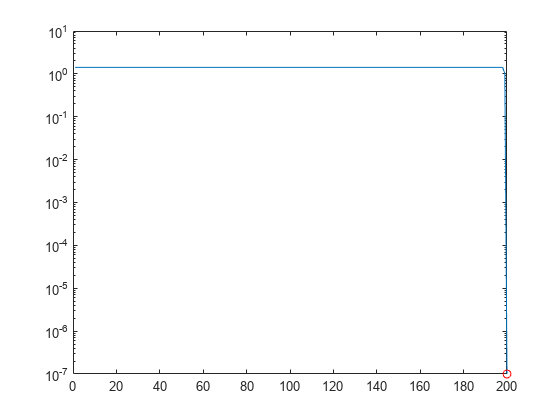svds
Subset of singular values and vectors
Syntax
Description
s = svds(A,k,sigma,Name,Value)svds(A,k,sigma,'Tolerance',1e-3) adjusts the
convergence tolerance for the algorithm.
Examples
Input Arguments
Name-Value Arguments
Output Arguments
Tips
svdsketchis useful when you do not know ahead of time what rank to specify withsvds, but you know what tolerance the approximation of the SVD should satisfy.svdsgenerates the default starting vectors using a private random number stream to ensure reproducibility across runs. Setting the random number generator state usingrngbefore callingsvdsdoes not affect the output.Using
svdsis not the most efficient way to find a few singular values of small, dense matrices. For such problems, usingsvd(full(A))might be quicker. For example, finding three singular values in a 500-by-500 matrix is a relatively small problem thatsvdcan handle easily.If
svdsfails to converge for a given matrix, increase the size of the Krylov subspace by increasing the value of'SubspaceDimension'. As secondary options, adjusting the maximum number of iterations ('MaxIterations') and the convergence tolerance ('Tolerance') also can help with convergence behavior.Increasing
kcan sometimes improve performance, especially when the matrix has repeated singular values.
References
[1] Baglama, J. and L. Reichel, “Augmented Implicitly Restarted Lanczos Bidiagonalization Methods.” SIAM Journal on Scientific Computing. Vol. 27, 2005, pp. 19–42.
[2] Larsen, R. M. “Lanczos Bidiagonalization with partial reorthogonalization.” Dept. of Computer Science, Aarhus University. DAIMI PB-357, 1998.

